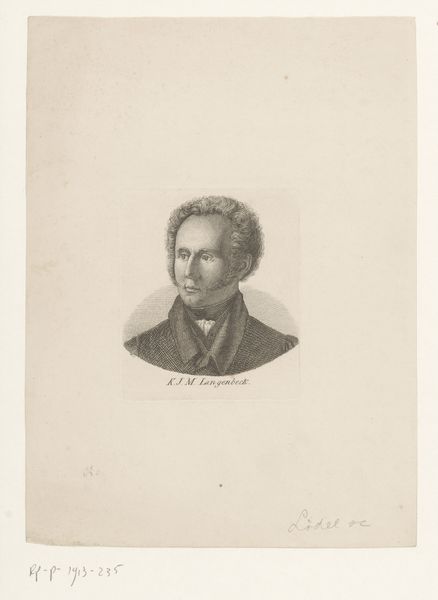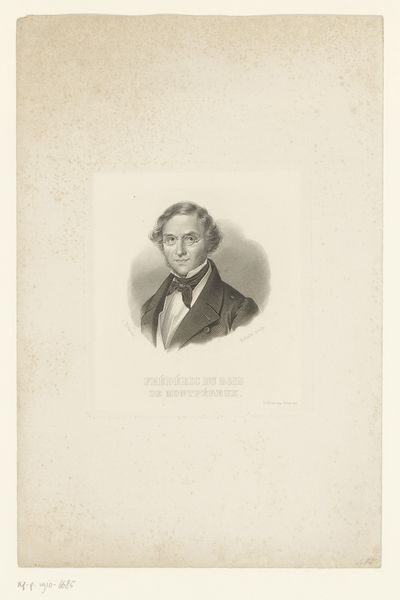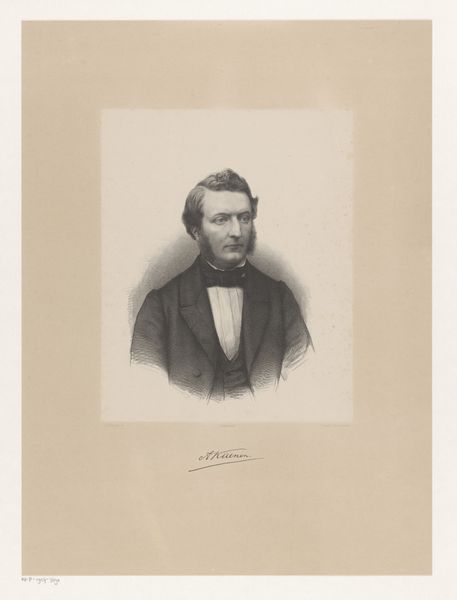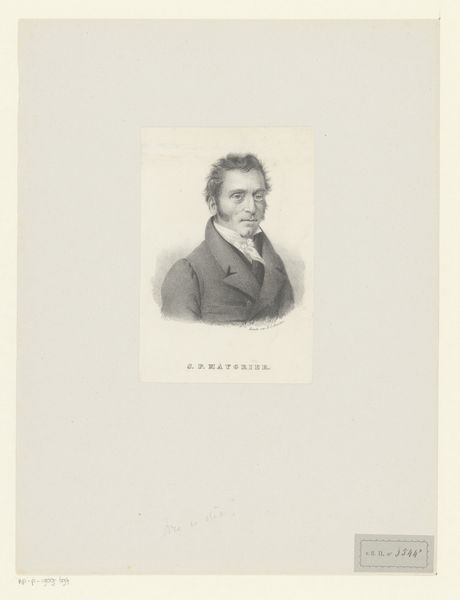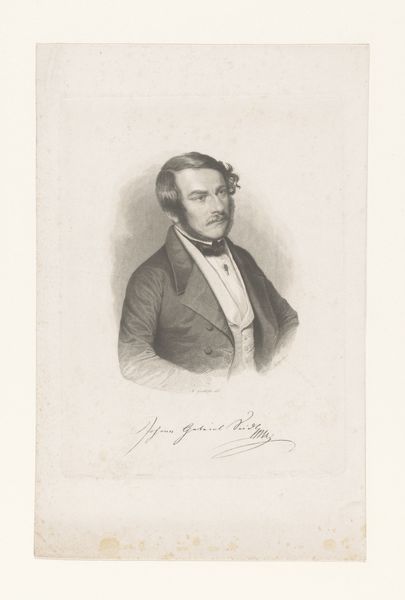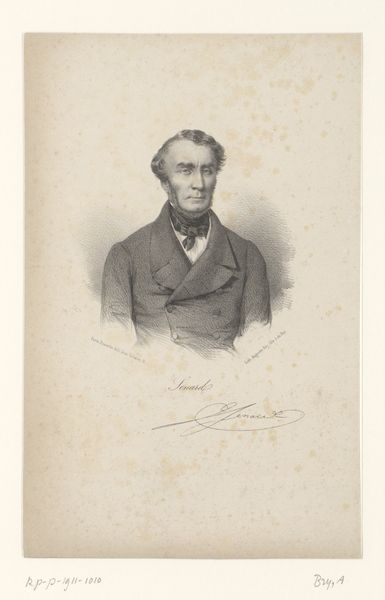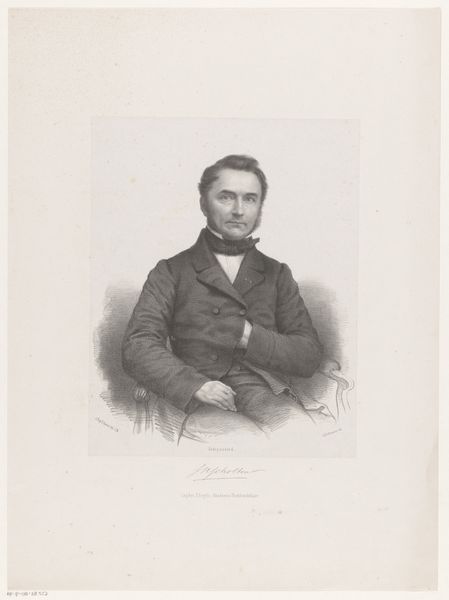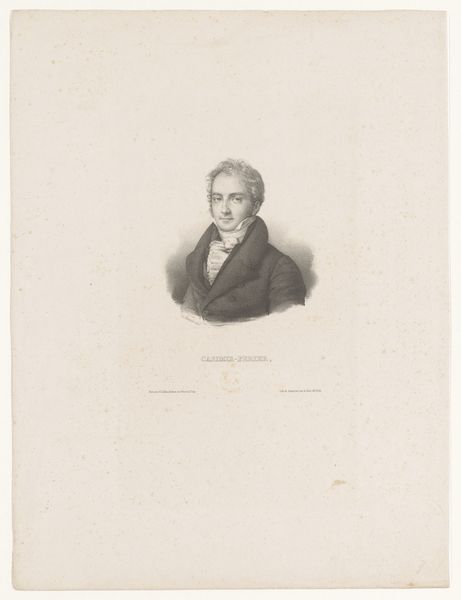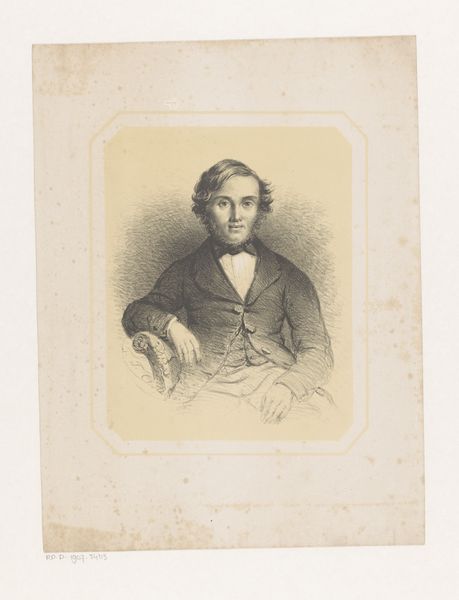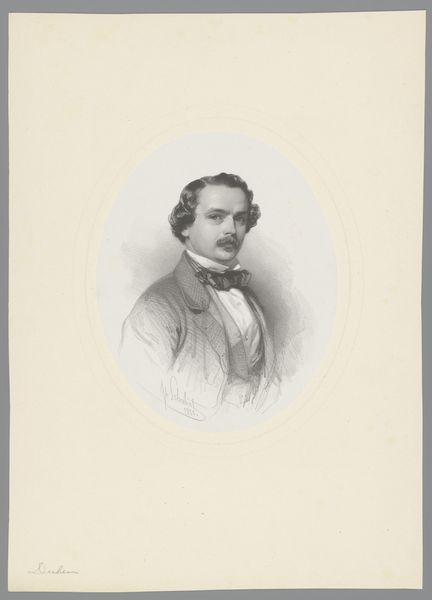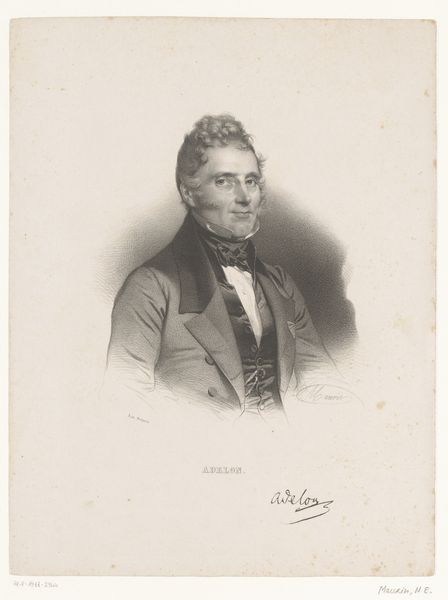
drawing, pencil
#
portrait
#
drawing
#
pencil
#
academic-art
#
realism
Dimensions: height 174 mm, width 119 mm
Copyright: Rijks Museum: Open Domain
Editor: This is a pencil drawing, "Portret van Justus von Liebig" by Nicolaas Johannes Wilhelmus de Roode, created between 1842 and 1873. It has a rather somber mood. What socio-historical layers do you perceive when you look at this portrait? Curator: I see a formal depiction reflective of its time, rooted in academic art and realism. But beyond the surface, I consider the power dynamics inherent in portraiture of this era. Who gets portrayed and why? Liebig was a prominent scientist, and this image reinforces the intellectual authority historically afforded to men in science. Do you see any signals about his social status? Editor: Absolutely. The tailored suit suggests a certain level of affluence and standing in society. And maybe the careful detail hints at a reverence, or at least a respect, for the subject. Curator: Precisely. Now, consider how the lack of representation of women and people of color in similar portraits of the time perpetuates existing inequalities. What assumptions are reinforced, and what voices are silenced by images like these? This piece asks us to reflect critically on historical biases in art. Editor: That's a powerful point. It's easy to appreciate the technical skill, but less easy to address issues about visibility. Curator: By situating this portrait within its socio-political context, we gain a deeper understanding of how art reflects and reinforces societal norms, prompting us to challenge historical biases that are perpetuated through seemingly benign imagery. Editor: I'm now seeing it's a mirror of a specific cultural lens and not just a portrait of a man. Thank you. Curator: It also encouraged us to consider art's relationship to power structures, as well as gendered, and racial visibility in historical visual narratives.
Comments
No comments
Be the first to comment and join the conversation on the ultimate creative platform.
